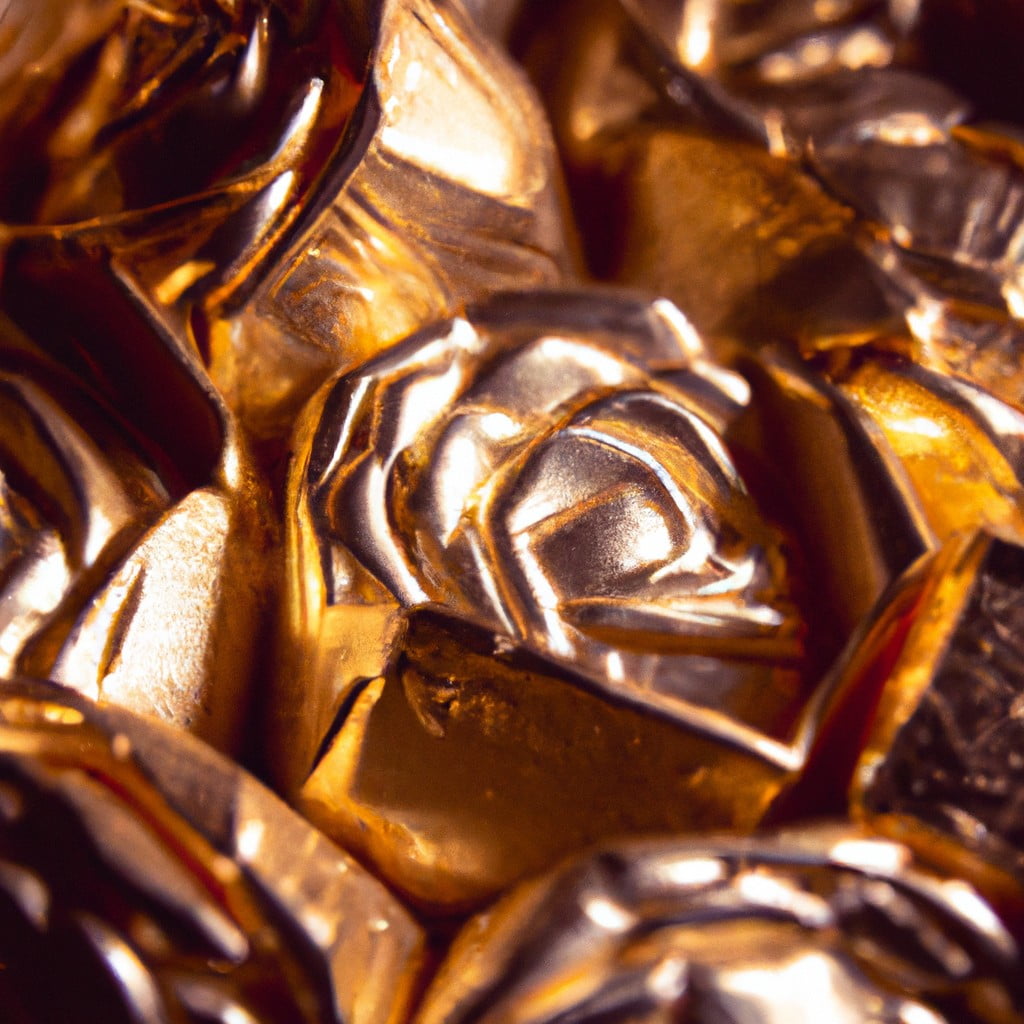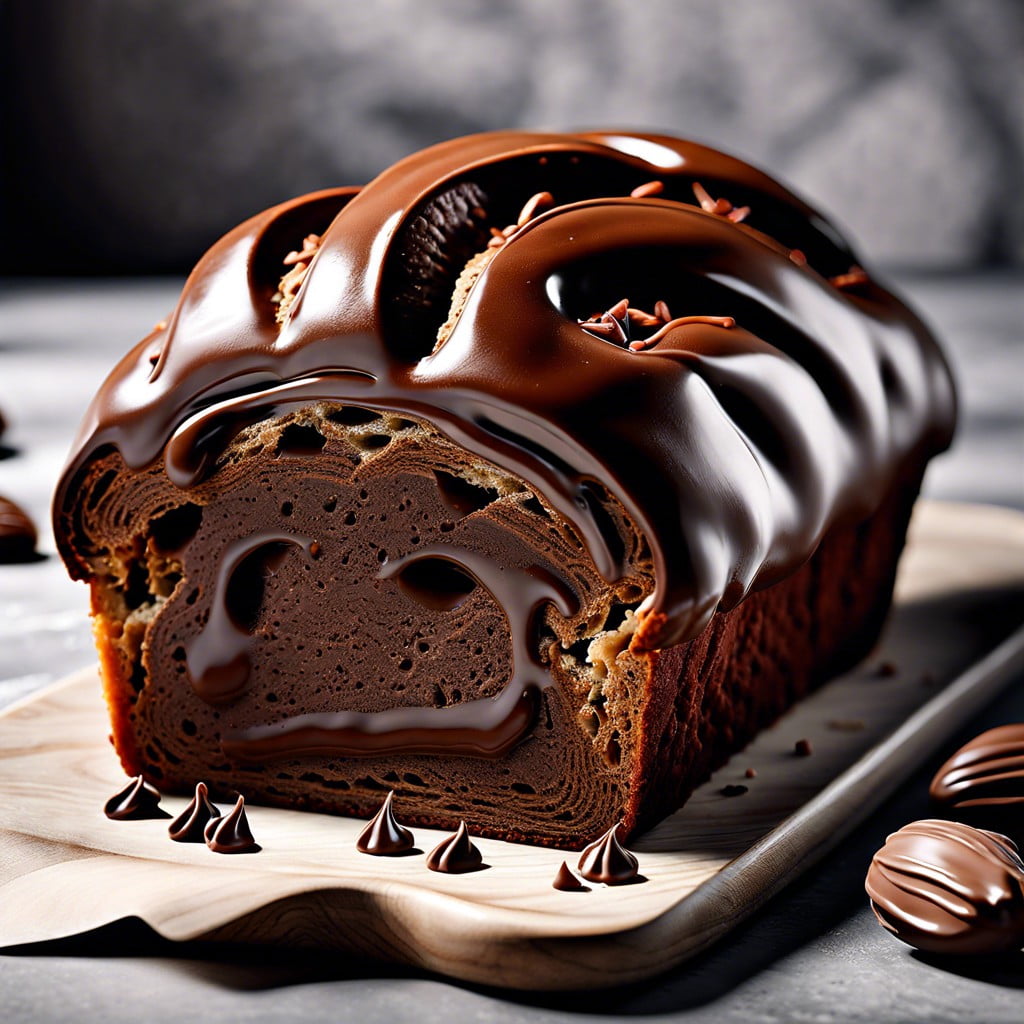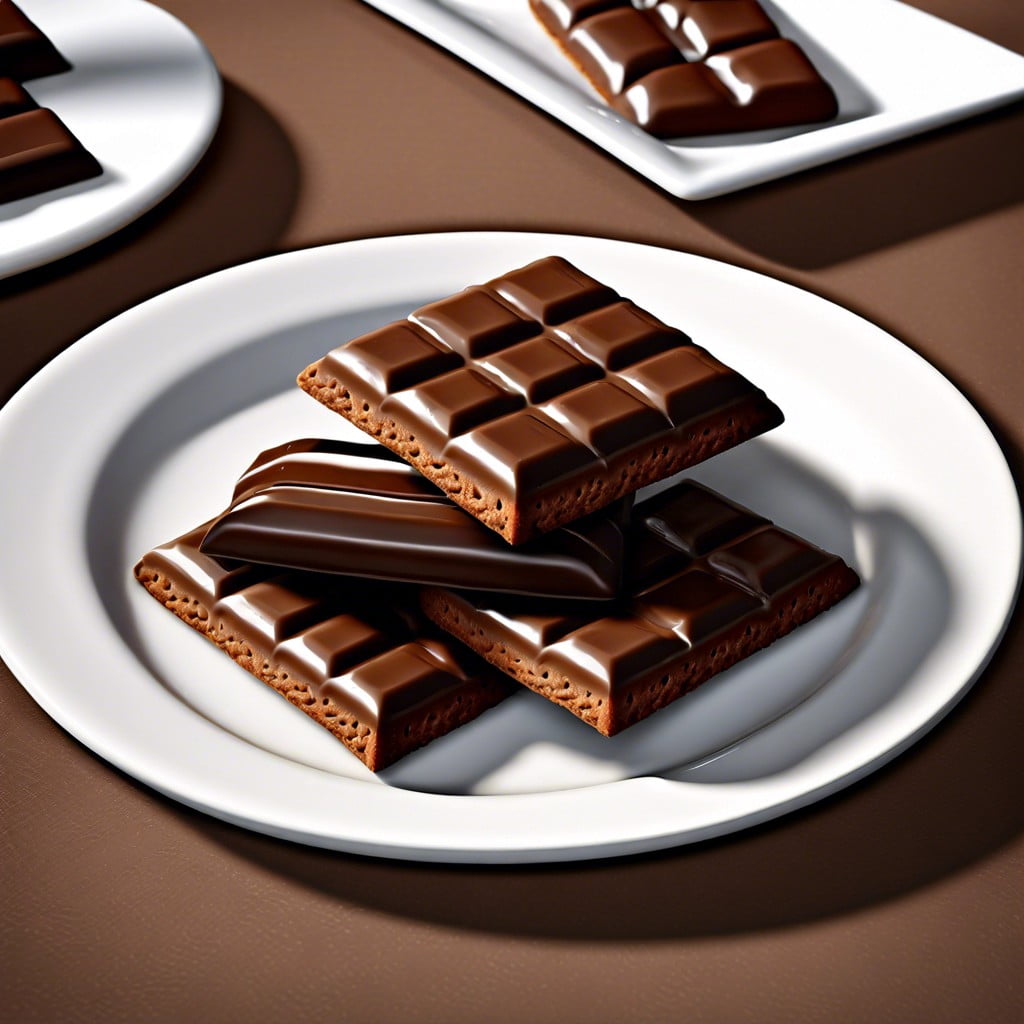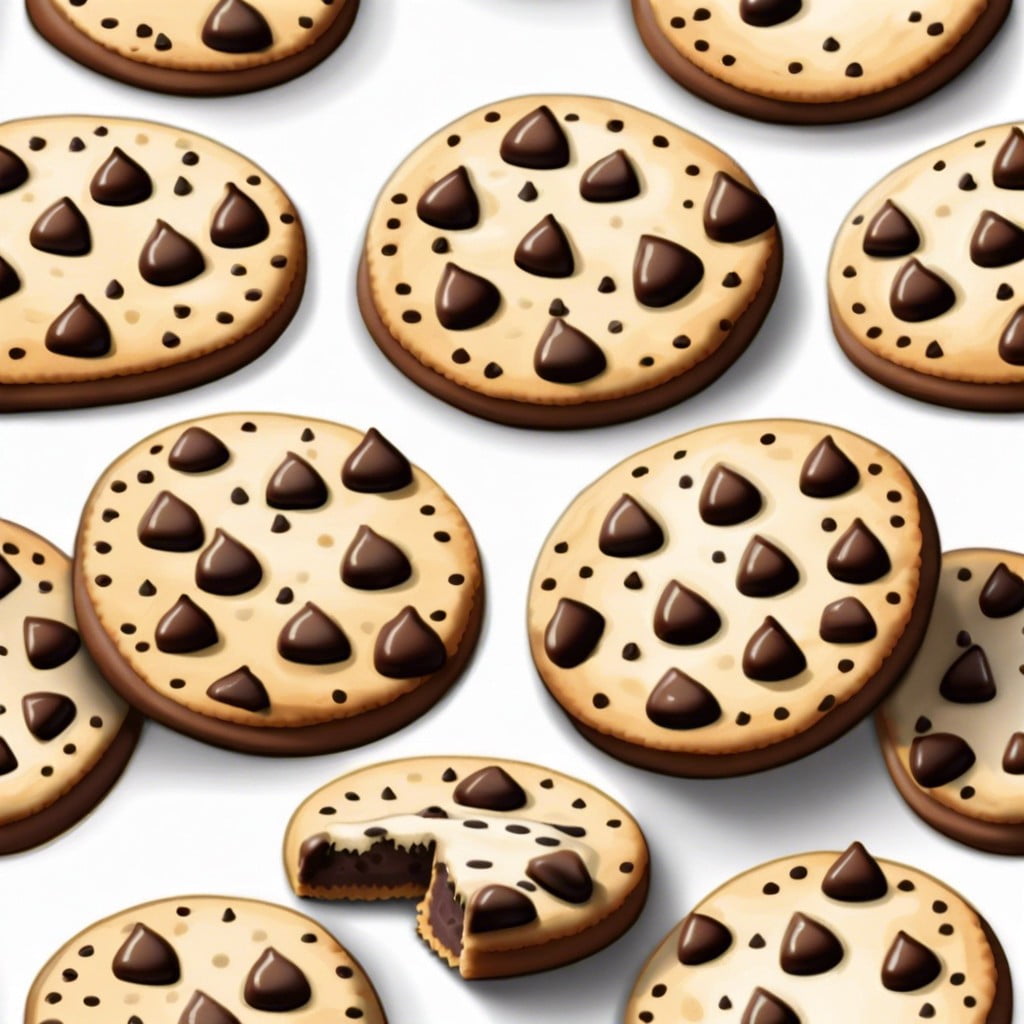Discover the art of crafting rose gold chocolate, a luxurious treat that combines the richness of cocoa with an elegant touch of shimmering color.
Creating rose gold chocolate is an elegant twist to traditional chocolate making. This process involves combining white chocolate with edible rose gold luster dust, resulting in a luxurious treat perfect for special occasions.
This article will guide you through the steps to make your very own rose gold chocolate, from selecting the right ingredients to the final finishing touches. It will also provide tips on how to best enjoy your rose gold chocolate.
So, whether you’re a seasoned chocolatier or a beginner, you’ll find all the details you need in the following sections.
Key takeaways:
- Use quality white chocolate for the best results.
- Beet juice creates the natural rose color.
- Incorporate unsweetened cocoa powder sparingly for depth of flavor.
- Add rose water for a subtle floral undertone.
- Enhance sweetness with strawberry syrup.
Inside
Ingredients for Making Rose Gold Chocolate

To create rose gold chocolate, you’ll need several key ingredients. The base will be quality white chocolate, selected carefully for its premium essence. Beet juice is the natural color provider, used to produce the iconic rose shade.
For an added depth of flavor and the metallic hint of gold, unsweetened cocoa powder is essential.
For a floral undertone that acknowledges the ‘rose’ in rose gold, a bit of rose water is necessary.
In an alternate method, combining strawberry milk and strawberry syrup with the white chocolate offers another delicious path to achieving the rose gold chocolate.
Each ingredient plays a distinct role in creating this decadent sweet treat.
How to Choose Quality White Chocolate
Identifying high-quality white chocolate involves both a look at its ingredients and its general characteristics. Opt for a bar containing cocoa butter as it contributes to the smooth, creamy texture distinct to white chocolate. Avoid products with vegetable oil as this substitute alters the taste materially.
Additionally, observe the consistency of the chocolate. It should break cleanly, highlighting a degree of firmness. The color should have a subtle yellow or ivory hue as pure white may indicate the use of excessive bleaching or low-quality ingredients.
Finally, smell and taste the chocolate. A faint aroma of vanilla and milk, along with a rich, sweet, creamy flavor, verifies a quality pick. Note that perceived sweetness can vary based on personal preference. Remember, quality white chocolate may cost more but will significantly improve your rose gold chocolate’s overall taste and look.
Use of Beet Juice for Natural Rose Color
Beet juice serves as an excellent, natural option for achieving the desired rose hue in your chocolate. Ensuring the beet juice is fresh will lend not only the color but a subtle, earthy flavor that enhances the sweetness of the chocolate.
To use beet juice for coloring, follow these steps:
- Juice fresh beets using a juicer. Alternatively, make use of organic, pre-packaged beet juice readily available at most grocery stores.
- Before adding the beet juice, ensure the melted white chocolate is off the heat to prevent seizing.
- Use a whisk to add in the beet juice, starting off with a small amount.
- Continually stir and observe the color change. You can always add more beet juice, but remember, too much can alter the flavor of your chocolate.
- Once the desired color is achieved, you can continue with the addition of other ingredients as stated in the recipe.
Remember, the key to a successful rose gold hue lies in the careful addition and thorough stirring of your beet juice.
Incorporation of Unsweetened Cocoa Powder
To achieve the desired rose gold hue, use unsweetened cocoa powder sparingly. It should lend a subtle richness and depth to your chocolate without overpowering the gentler rose and white chocolate flavors.
Ensure that your cocoa powder is well-sifted to avoid any lumps. Incorporating it correctly affects the ultimate result. Use an appropriate mixing technique, such as folding or gently whisking, to prevent chocolate from seizing or clumping.
Remember to incorporate cocoa powder into your melted white chocolate delicately. Do so before adding other ingredients such as beet juice or rose water. The sequence ensures proper blending and uniformity in color and taste.
Lastly, always taste your mixture after adding cocoa powder. Its potency varies by brand, so adjust as necessary to hit the sweet spot between a light cocoa flavor and the crisp brightness of white chocolate.
Remember, moderation is crucial when using this ingredient. Too much can easily turn your rose gold chocolate into a darker shade. Working with unsweetened cocoa powder offers control over your chocolate’s final sweetness level, which can be adjusted with additional ingredients later in the process.
How to Incorporate Rose Water for Flavor
Firstly, ensure that you have commercially made, food-grade rose water, which is safe for consumption. To complement the rose gold chocolate’s visual appeal, add a few drops of rose water to the melted white chocolate. However, be cautious not to overdo with it as the rose flavor can become overpowering. The quantity depends on the overall amount of chocolate you are making, but a guideline would be approximately one teaspoon of rose water per 200 grams of chocolate.
Remember, the goal here is to provide a subtle hint of rose that doesn’t overcome the sweetness of the chocolate and the delectable tartness of the strawberry. Therefore, taste as you go, and adjust accordingly to your preference. If you are unsure about the rose flavor, start with smaller amounts. You can always add more, but you cannot take it away once mixed in.
For an even distribution of the rose flavor, ensure you mix in the rose water while the chocolate is still in its melted state. Stir the mixture gently, ensuring every piece of chocolate is immersed in the rose-infused concoction. This process ensures the rose flavor permeates the full batch of chocolates, providing a lovely floral undertone with each bite.
Next, let the chocolate set and mature for a few hours before use, allowing the flavors to meld together beautifully. The longer you let the chocolate set, the more developed and rich the rose flavor becomes, enhancing the overall taste profile.
Steps to Make Rose Gold Chocolate With Strawberry Milk
Begin by melting white chocolate over low heat in a double boiler, stirring gently until fully melted without any chunks.
Add in the strawberry milk, pre-heated slightly, until properly integrated with the melted chocolate.
Gradually add beet juice to achieve a rosy hue. This may require both patience and precision as adding too much may result in a color that is too intense.
Include rose water at this stage for a subtle floral undertone. Stir till homogeneous.
The mixture should be smooth and a uniform rosy gold color at this point.
Spread the mixture on a baking sheet lined with parchment paper. Ensure it is spread evenly and in a thin layer.
Let it cool completely. This could be done at room temperature or in a refrigerator.
Once hardened, the rose gold chocolate infused with strawberry milk should be broken into pieces or cut into desired shapes before serving.
Remember, garnishing it with edible rose petals or gold flakes could make it visually more appealing while adding a touch of elegance.
Enhancing Sweetness With Strawberry Syrup
Strawberry syrup, a versatile and accessible ingredient, brings an elevated sweetness and depth of flavor to rose gold chocolate. Its balanced blend of tartness suppresses the overt sweetness of white chocolate, adding complexity.
The procedure of incorporating strawberry syrup is simple and straightforward. Start by heating the syrup gently until it reaches a pourable consistency. As the white chocolate gently melts, drizzle in the heated syrup, stirring continuously to ensure it gets evenly combined. The syrup doesn’t just augment the sweetness but also contributes to the luxurious, velvety texture of the final product.
Quantity control is crucial when adding strawberry syrup. Start with small amounts, just a few tablespoons initially, and adjust according to taste. Too much syrup might overpower the delicate flavour of the rose water and beet juice. Carefully balance the ingredients to achieve a harmony of flavor that truly embodies the richness of rose gold chocolate. Finally, avoid using syrup with artificial flavorings or color, as these will compromise the natural authenticity of your homemade rose gold chocolate.
FAQ
What colors make rose gold?
Rose gold can be achieved by mixing gold, silver, and red paint, or alternatively, by combining red and white.
How is the type of cocoa used in making rose gold chocolate significant?
The type of cocoa used in making rose gold chocolate is significant because it directly determines the color, flavor, and texture of the final product.
What’s the role of edible luster dust in achieving the rose gold color?
Edible luster dust is used to give chocolate a shiny, rose gold color by dusting it on the surface after it is set.
What factors affect the setting process for rose gold chocolate?
The setting process for rose gold chocolate is predominantly influenced by the temperature control, quality of cocoa butter, the ingredient ratios, and the tempering process.




